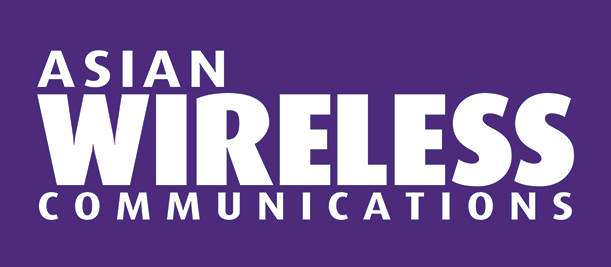10 April 2025

Peng Zhao, Vice President, Policy & Regulatory, GSOA
India’s incoming LEO constellations are poised to complement existing MEO and GSO satellite offerings, playing a transformative role in enhancing multi-orbit connectivity, driving innovation, and creating significant opportunities for collaboration within India’s telecommunications sector.
Satellite technology offers a promising solution to expand internet access to remote, unserved, and underserved regions in India where terrestrial networks are either unavailable or inadequate. By leveraging satellite connectivity, we can bring the benefits of the internet to communities that have historically lacked reliable broadband infrastructure. This has the potential to spur economic development, improve access to education and healthcare, and connect more Indians to the digital world.
The advancements in satellite technology are likely to introduce new services and business models among MNOs, including IoT solutions and enhanced mobile broadband, thereby improving overall connectivity.
Spectrum rights
Spectrum is a finite resource, and its allocation is critical for both MNOs and satellite operators, especially as capacity demands grow. The tensions between MNOs and satellite operators reflect broader challenges in managing spectrum allocation and regulatory practices, necessitating ongoing dialogue and collaboration among all stakeholders.
Effective collaboration requires a conducive regulatory environment. Unresolved spectrum disputes could lead to delays in service deployment, increased costs for consumers, and hinder India’s digital transformation goals. It is essential to find a balanced solution that ensures both sectors can thrive without compromising connectivity for end-users. MNOs, satellite operators, and policymakers must work together to develop spectrum regulations that allow both terrestrial and non-terrestrial networks to coexist harmoniously, ensuring efficient use of available frequency bands.
However, while satellite operators share allocated spectrum through coordination, the mobile industry relies on exclusive spectrum usage. Introducing mobile services in a band currently used by satellites would prevent incumbent operators from continuing their operations.
We advocate for regulatory frameworks that ensure fair and non-discriminatory access to spectrum, balancing rapid technological evolution with the need for all players — both terrestrial and non-terrestrial — to operate effectively.
Auction vs allocation
Auctioning spectrum works well when the demand for exclusive use of the resource exceeds supply, which is the case for mobile spectrum. However, satellite spectrum is shared among GSO and NGSO operators, making auctions an inefficient and impractical approach, contrary to international best practices. Auctions could lead to monopolistic or semi-monopolistic control, requiring non-transparent private arrangements for non-winners to gain access.
Moreover, satellites typically have global or regional coverage, necessitating harmonized spectrum use across countries. The same satellite cannot use different frequencies in neighbouring countries, highlighting the importance of ITU filings and operator-level coordination.
GSOA believes that auctioning satellite spectrum is not in the public interest, as it could create barriers to entry for new operators, limit access to this shared resource, and lead to artificial scarcity. Instead, GSOA supports administrative allocation practices, which have proven effective in fostering a healthy and competitive satellite sector globally.
Boosting profitability
MNOs and satellite operators can work together to achieve universal connectivity while creating profitable business scenarios that support sustainable growth in both sectors. In India and internationally, we’ve seen encouraging examples of cooperation. For instance, last year, GSOA and GSMA signed a cooperation agreement to work together to foster innovation and seamless Terrestrial and Non Terrestrial Network (TN-NTN) integration.
By forming partnerships, MNOs can invest in satellite systems alongside satellite operators, sharing the costs and benefits of deployment. This joint investment can make infrastructure more affordable for both parties and lead to improved service offerings.
MNOs can integrate satellite technology with existing mobile networks to enhance service delivery. For example, satellites can serve as backhaul for rural mobile sites, extending coverage to underserved and remote areas where traditional terrestrial infrastructure is not economically viable. Such collaboration can facilitate better coverage and extend services without the need for extensive ground infrastructure, and create new revenue streams for MNOs, and expand the market reach of satellite operators, resulting in a win-win-win situation for satellite operators, mobile operators and consumers.
Government and regulatory bodies play a crucial role in facilitating these collaborations by creating a supportive policy environment, ensuring fair spectrum allocation, and incentivizing investments in hybrid network infrastructure. Their involvement will be key to unlocking the full potential of MNO-satellite partnerships.
Outlook
The ideal vision for India’s communications industry in 2025 is achieving universal and meaningful connectivity, particularly for underserved rural areas. This vision could be realized through the effective use of advanced satellite technologies that complement terrestrial networks, fostering an integrated ‘Network of Networks’ to bridge the digital divide. Such an approach would create a resilient ecosystem where both satellite and terrestrial communications converge to provide widespread coverage and robust services, enabling various government initiatives related to e-Governance, financial inclusion, and healthcare to flourish.
To unlock the potential of convergence and industry collaboration, a regulatory framework that supports technology neutrality is essential. Policymakers should focus on inclusivity rather than favouring any single technology, as no single solution can address all connectivity challenges. This requires eliminating barriers that prevent the optimal use of combined technologies and providing technology-agnostic solutions and funding.
India’s new Space Policy has made significant progress in streamlining and centralizing space activities. It is crucial to maintain adherence to these standardized procedures, as they provide the certainty needed for industry investment and growth. However, ongoing discussions around spectrum allocation, pricing, and availability have created uncertainty and delayed service deployment. It is now imperative to provide clarity and help the industry move forward with confidence. Operators are ready and eager to access the spectrum and begin providing services to Indian consumers.






